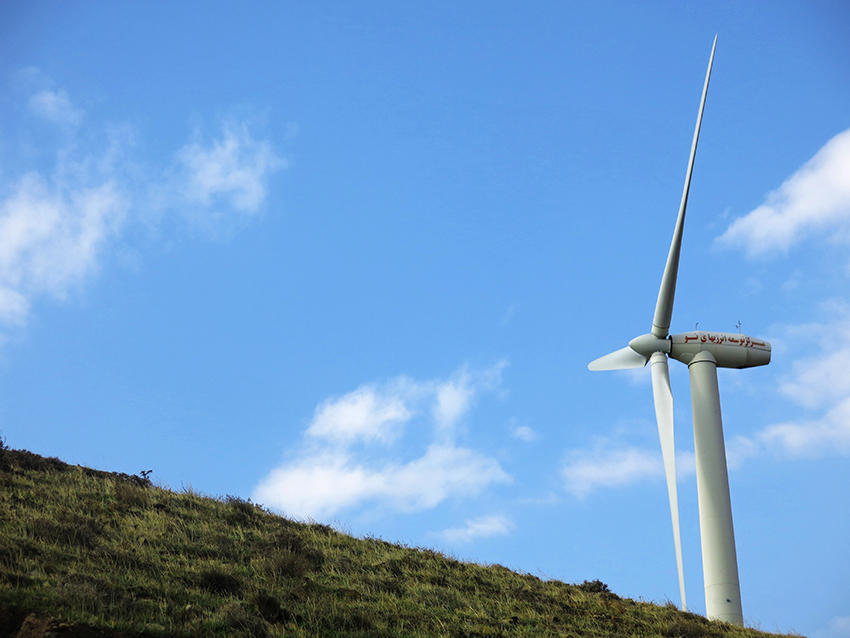Currently 94 percent of wind turbine equipment is produced domestically, an official from the Renewable Energy Organization of Iran (SUNA) said Tuesday, ILNA reported.
"Iran is a country with huge but untapped wind energy potentials," director of SUNA's wind energy engineering department, Iraj Harsini, added.
In the southeastern Sistan-Baluchestan Province, about $1 billion has been recently spent on exploiting wind energy, Harsini said, adding that the project is expected to create new jobs and help with the local economic growth.
"In developed countries, governments invest in renewable energies to encourage people to start making their own investments," the SUNA official noted, "Their aim is to persuade people that they will be making high return investments because renewable energies is a business with low risk."
Foreign companies from South Korea, Germany and Japan have expressed interest in investing in renewable energy of Iran. A contract was signed recently with a European firm to set up a 50 MW solar power plant in central Iran.
In addition, recent studies suggest that Iran has the potential to generate 40,000 MW of electricity through wind power.
Production of the wind turbines, with a capacity to produce 2.5 megawatts (MW) of electricity, has been carried out for the first time in Iran, bringing about self-sufficiency in manufacturing of wind turbines, Harsini added.
Previously, Iran imported wind turbines from western countries.
Besides meeting domestic demand, grounds are now established to export turbines, a measure which will help prevent hard currency outflow and generate revenues from ways other than oil exports.
"Our engineers can now produce 660 kilowatt wind turbines," Harsini stated, adding that the energy ministry's research center is in cooperation with Iran Power Generation Transmission & Distribution Management Company (Tavanir) for the manufacture of 2 megawatt wind turbines. SUNA , he said, is in charge of supervising the project.
In its most recent report, the International Energy Agency (IEA) said the global wind turbine blade market was valued at nearly $1 billion in 2013 and it is projected to reach a value of $16.98 billion by 2019 from an estimated $10.9 billion in 2014 with a compound annual growth rate (CAGR) of 9.2% for forecast period.
Rising electricity demand, support from government policies, and reducing costs of wind power generation are the major drivers for this market. The most commonly used turbines in the past few years have a capacity of 1.5 to 2.5MW, for which the blade length varies between 38-50m.
The IEA singled out the Middle East as a region where fossil fuel subsidies are hampering renewables. It said 2 million barrels per day of oil are burned to generate power that could otherwise come from renewables, which would be competitive with unsubsidized oil.
According to the energy ministry, while the share of renewable resources in Iran’s total energy production currently stands at almost 0.5%, the number is expected to reach 5 percent in the next four years.
Iran needs to generate 5,000 MW of renewable energies by 2015 as stipulated in the Fifth Five-Year Economic Development Plan (2011-16).


